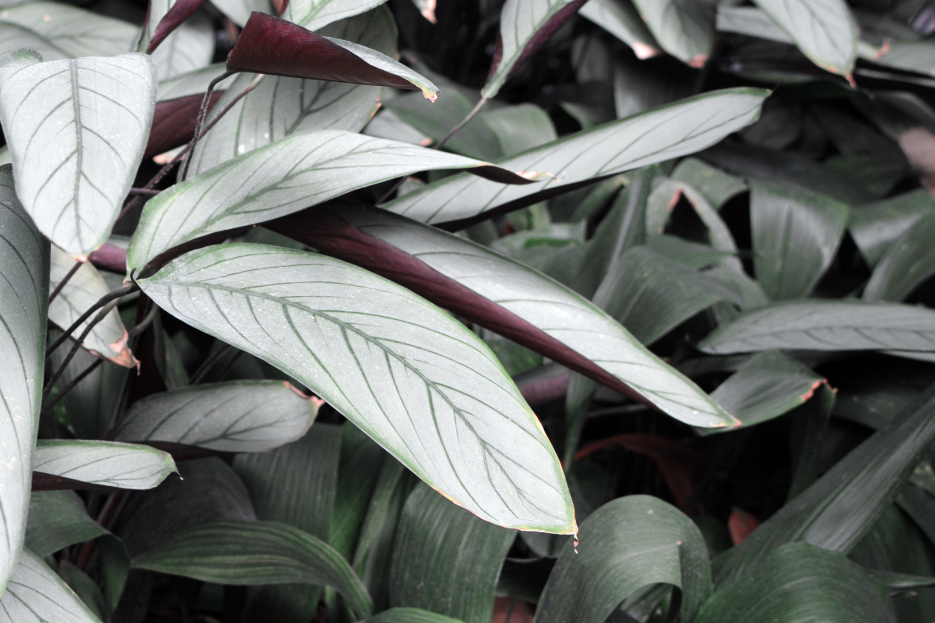
Ctenanthe ‘Grey Star’ is a stunning tropical plant known for its silvery-grey leaves with dark green veins and deep purple undersides. As a member of the Marantaceae family, it shares traits with Calatheas and Stromanthes, making it a popular choice for those who love ornamental foliage. This plant is perfect for adding a touch of elegance to any indoor space, but it does require specific care to keep its leaves looking vibrant and healthy.
Here’s a complete guide to help you care for your Ctenanthe ‘Grey Star’ and keep it thriving!
Ctenanthe ‘Grey Star’ grows best in bright, indirect light. Too much direct sunlight can scorch its delicate leaves, causing brown spots or faded colors. Place it near an east- or north-facing window where it gets filtered light throughout the day. If your space has lower light conditions, the plant will tolerate it but may grow more slowly. If you notice leggy growth or dull leaf colors, consider moving it to a brighter spot or using a grow light.
This tropical plant enjoys consistent moisture, but overwatering can lead to root rot. Water your Ctenanthe ‘Grey Star’ when the top inch of soil feels dry. Use filtered, rain, or distilled water, as tap water with fluoride or chlorine can cause brown leaf edges. Reduce watering during the winter months when growth slows. If you notice wilting or drooping leaves, your plant may be thirsty, but yellowing leaves often indicate too much water.
Ctenanthe ‘Grey Star’ thrives in well-draining, peat-based soil that retains moisture but does not stay soggy. A mix of potting soil, perlite, and coconut coir works well to create the right balance. Ensure your pot has proper drainage holes to prevent water from accumulating at the bottom. Repot your plant every 1-2 years to refresh the soil and allow for continued healthy growth.
This tropical beauty prefers warm temperatures between 65-80°F (18-27°C). Keep it away from cold drafts, air conditioners, and heating vents, as sudden temperature changes can stress the plant.
Humidity is essential for Ctenanthe ‘Grey Star’. It thrives in humidity levels above 50%. If the air in your home is dry, especially in winter, you can increase humidity by:
Dry air can cause crispy leaf edges and curling, so maintaining a humid environment is key to keeping your plant healthy.
Feed your Ctenanthe ‘Grey Star’ every 4 to 6 weeks during the growing season (spring and summer) with a balanced liquid fertilizer diluted to half strength. Avoid fertilizing in fall and winter when growth slows. Over-fertilizing can lead to salt buildup, which may cause leaf burn. If you notice brown tips or leaf discoloration, flush the soil with distilled water to remove excess salts.
To keep your Ctenanthe ‘Grey Star’ looking lush, remove any yellowing or damaged leaves by trimming them at the base. If your plant becomes too tall or leggy, prune back the stems to encourage bushier growth. Since this plant naturally folds its leaves at night (a trait of the prayer plant family), be sure to check its leaves during the day for any signs of stress.
Wipe the leaves regularly with a damp cloth to remove dust and improve photosynthesis.
Ctenanthe ‘Grey Star’ is best propagated through division. When repotting, gently separate the plant into smaller clumps, making sure each division has healthy roots and stems. Replant the divisions in fresh soil and keep them moist and humid until new growth appears.
Good news! Ctenanthe ‘Grey Star’ is non-toxic to cats and dogs, making it a great pet-friendly plant. However, it’s always best to keep plants out of reach of pets to prevent leaf damage.